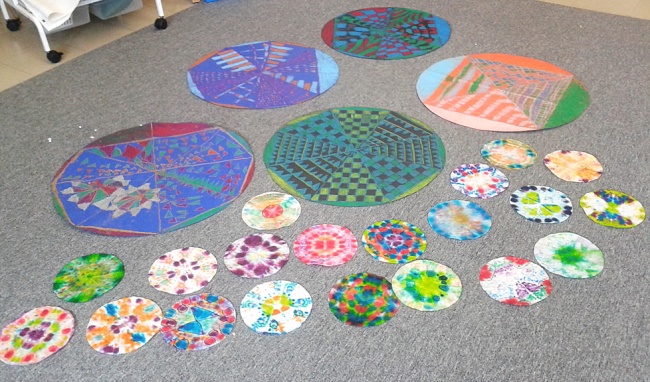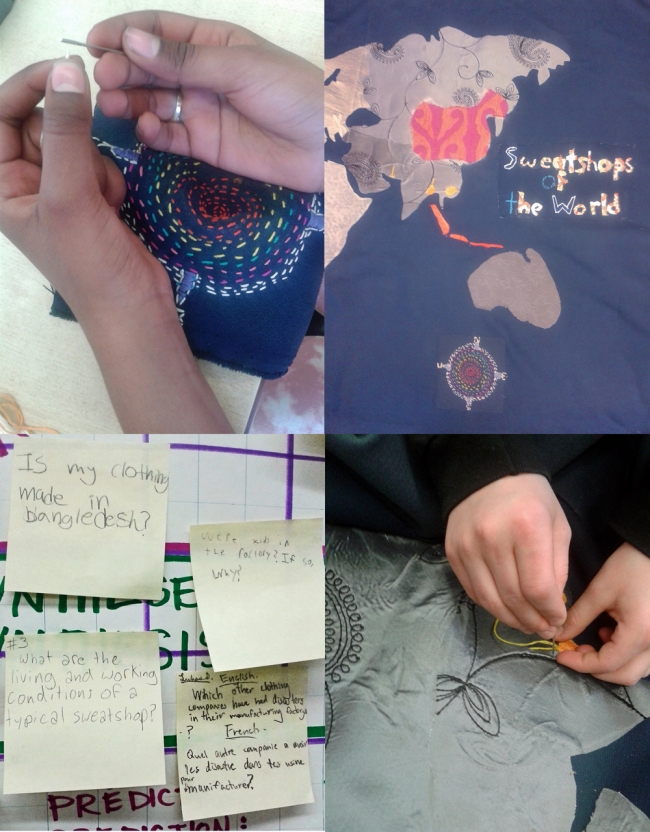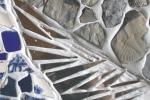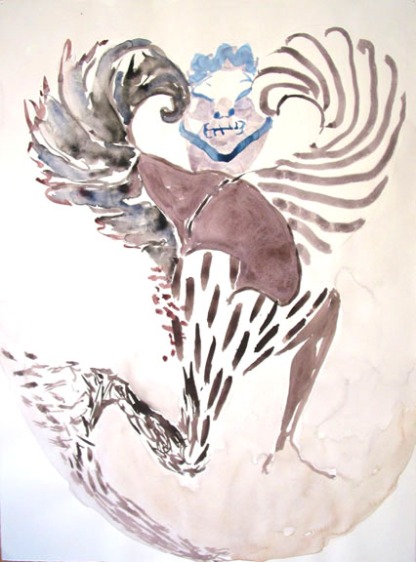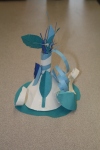This fall I worked with Diasporic Genius for six weeks to plan and coordinate a slate of classes promoting creativity as community-building skill, culminating in a harvest festival.
As part of this series I led a group making silk banners for the festival. I challenged myself to combine instruction with artistic direction – which felt like a more “bossy” take on teaching than usual, since I am usually deliberately hands-off when teaching people to find their own artistic voices and make their own creative decisions, giving them time to make and transform mistakes. While we kept focused on the goal, I believe I succeeded in giving the participants enough space to enjoy the creative process, learn new artistic concepts and techniques and build confidence in their own skills.
The participants were a lively group of women originally from Pakistan, the Philippines and Bangladesh, both beginners and participants with considerable skill in fashion and textile design, henna painting, watercolour painting, and teaching. We shared tea and snacks during an icebreaker in which we introduced ourselves and talked about things we are grateful for – a subject I initiated to get us working with the “thanks-giving” theme of the festival, and because this is a great way to find common ground in a cross-cultural group. I find it effective to focus on commonalities rather than differences when priming a group with divergent skill levels, cultural backgrounds and English comprehension levels to collaborate creatively.

I challenged the women to create together right away, asking them to pair up with someone they did not know to draw circular mandalas ( my variant on an exercise introduced to me by B.Ed. art instructor Hillary Inwood.) They rose to the challenge with beautiful thoughtfulness and diplomacy, and when a few new women joined our group while others were absent, we developed a protocol for adding to a piece which other people had originally designed, in the spirit of “offering help” rather than “interfering.”
-

-
making a mandala together
-

-
two of four groups
These sketches became the basis for banners made with serti-painted silk. Serti-painting is a demanding technique since you cannot erase; once you make a mark, you are committed to working with it whether it was intended or a “mistake.” I use this to challenge students to think of “mistakes” as “happy accidents” (which I too had to keep in mind when, despite my extensive dyeing experience, there were some glitches in the steam-setting).
-

-
We stretched silk over the mandalas then added gutta outlines.
-

-
outled Urdu
-

-
gutta outlining resembles henna painting
-
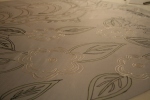
-
shining gutta on lustrous silk pongee
-
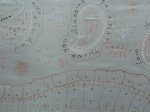
-
Tagalog and English
-

-
sisters
-
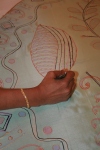
-
motif derived from shells on the beaches of Bangladesh
-

-
wheat, sun, hearts, flame
-

-
adding dye between the gutta outlines
-

-
careful work
-

-
ready for steam setting
The banners have Bangla, Urdu, Tagalog, Arabic and English expressions of gratitude written on them, plus paisley motifs (symbolic of mangoes), shells, sunburst and other symbols of plenty. The circles are symbolic of unity and community. The silks shone and floated in the sun as community members belly danced, told stories, drummed and sang on the festival stage.
-

-
almost complete
-

-
four cicles
-

-
floating in the wind, glowing in the sun
-

-
four full-sized banners plus central signature panel – on display beside festival stage
Thanks to Diasporic Genius and the program participants for allowing me to post their photos!
P.S. The classes also included Bellydancing, Afro-Cuban Hand Drumming, Creative Pathfinders for youth, Story Circle for adults, Folk Singing and Fabric Banners. The instructors are well-known performing artists including Roula Said, David Buchbinder, Joaquin Nunez Hidalgo and Brenna MacCrimmon.

